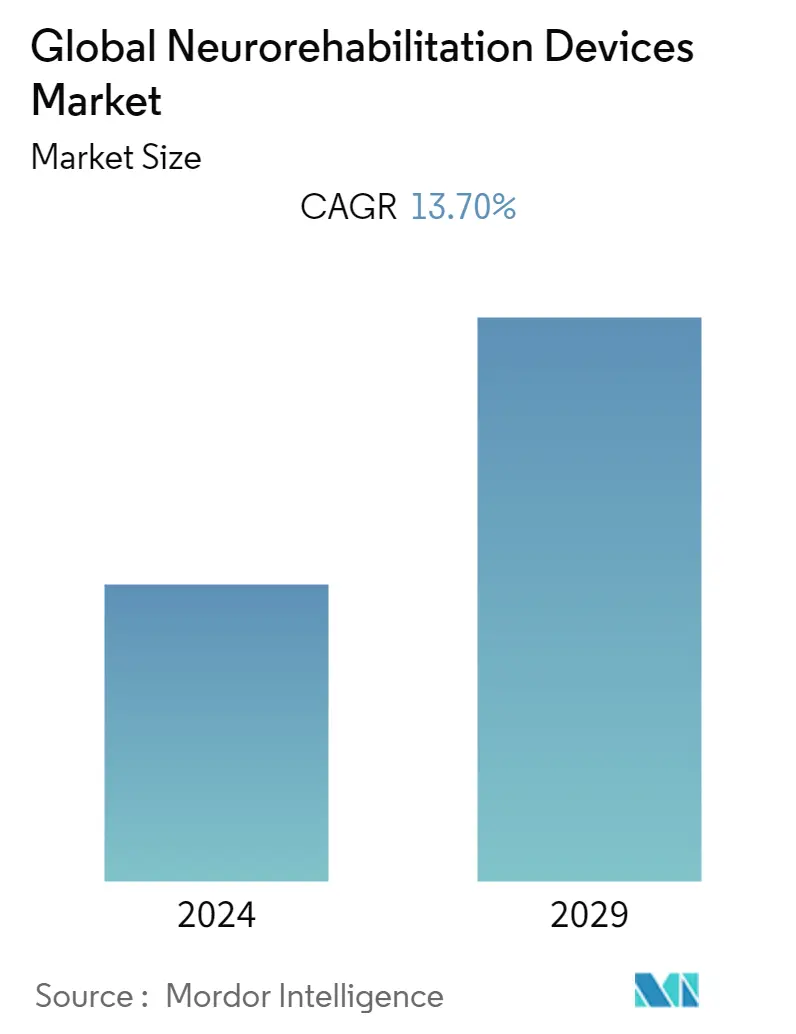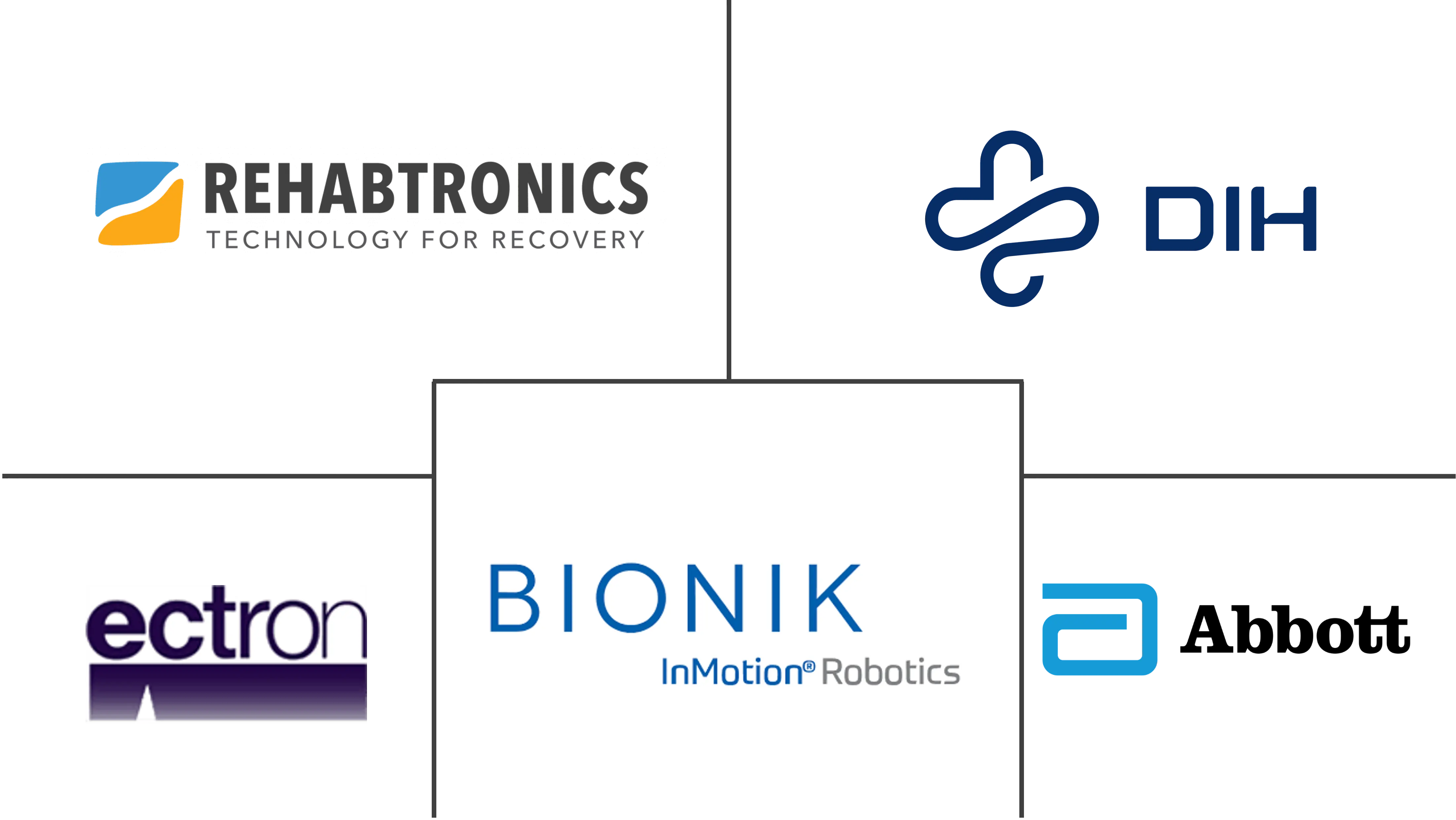Market Size of Global Neurorehabilitation Devices Industry

| Study Period | 2019 - 2029 |
| Base Year For Estimation | 2023 |
| CAGR | 13.70 % |
| Fastest Growing Market | Asia Pacific |
| Largest Market | North America |
| Market Concentration | Medium |
Major Players
*Disclaimer: Major Players sorted in no particular order |
Need a report that reflects how COVID-19 has impacted this market and its growth?
Neurorehabilitation Devices Market Analysis
The neurorehabilitation devices market is expected to register a CAGR of 13.7% during the forecast period.
COVID-19 has significantly impacted the growth of the neurorehabilitation market owing to factors such as delayed consultations and therapies. For instance, as per the article published in January 2022 in PubMed, during the COVID-19 pandemic, different organizational models were implemented in neurorehabilitation, which had an impact on the duration of treatments, the physical and mental health of healthcare professionals, and the workload of caregivers. Furthermore, according to the study published in October 2021, telerehabilitation was perceived as a key innovation and an effective strategy to combat the pandemic and lower the worldwide handicap load. It also reported that the pandemic scenario presented an opportunity to optimize and scale up health-related technology advancements to tackle the rising burden of neurological impairment in LMICs. Since the COVID-19 restrictions were lifted, the neurorehabilitation devices market is anticipated to witness growth due to the rise in the prevalence of neurological disorders and technological advances in neurorehabilitation devices.
Factors such as the increase in the prevalence of neurological disorders and the surge in neurorehabilitation devices with technological advances. For instance, according to the "World Alzheimer Report 2021," published in September 2021, over 55 million people worldwide live with dementia. This is forecasted to reach 78 million by 2030. The increasing burden of Alzheimer's disease globally surges the demand for neurorehabilitation devices, thereby leading to the growth of the studied market. In addition, approvals for neurorehabilitation devices by international regulatory agencies also contribute to the market's growth over the forecast period. For instance, in April 2021, the United States Food and Drug Administration granted marketing approval for the IpsiHand Upper Extremity Rehabilitation System (IpsiHand System), a brain-computer interface (BCI) device that assists in rehabilitation for stroke patients with upper extremity (hand, wrist, and arm) disabilities. Furthermore, in August 2022, Neurofenix, a health tech startup with roots in the UK, picked up a capital investment of EUR 7 million to build out its product line and kickstart clinical trials in the US. The startup is using a ground-breaking, patient-centric approach to at-home rehabilitation and recovery that is proving to be more supportive and engaging.
Therefore, the rising prevalence of neurological disorders, the growing geriatric population, and technological advancements in neurorehabilitation devices are the key driving factors for the market's growth. However, the high cost of neurorehabilitation devices may hinder market growth over the forecast period.
